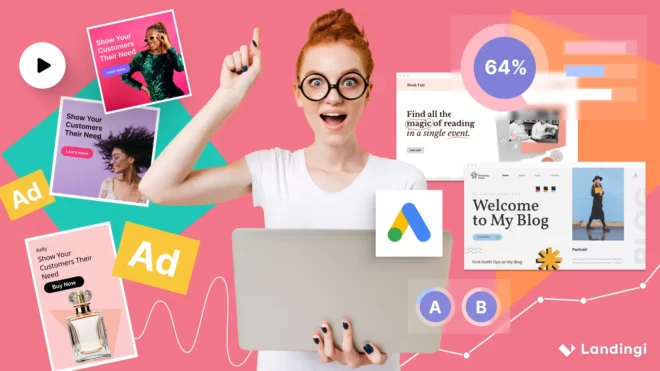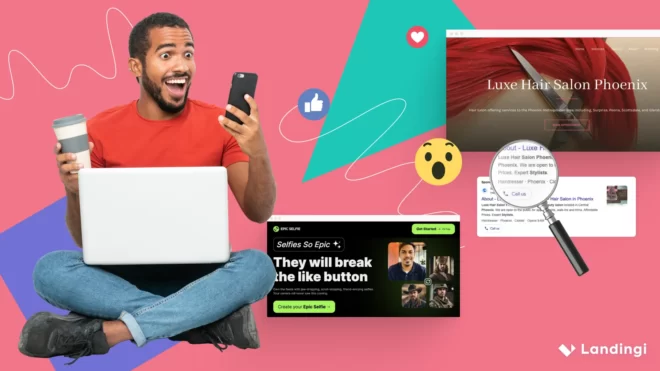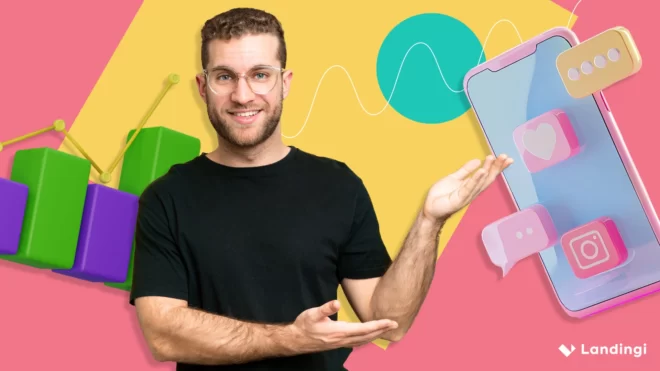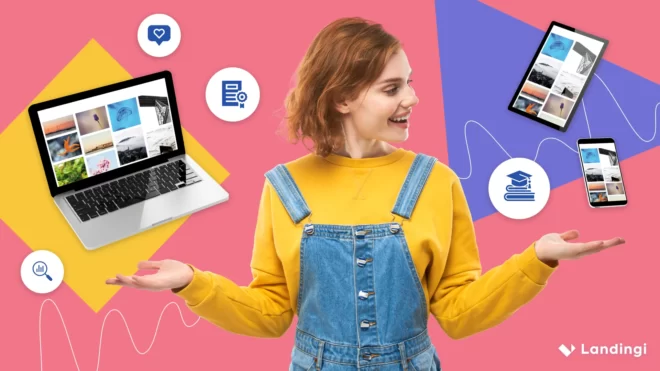With the continuous evolution of digital marketing, businesses often find themselves deciding between traditional digital marketing tactics or shifting toward an inbound marketing approach. Both aim to attract potential customers, but they go about it in very different ways. Digital marketing focuses on quick, broad-reaching methods like paid ads to get fast results, while inbound marketing is more about creating valuable content that draws people in over time. As Khalid Sales puts it, “Businesses that mainly rely on Inbound Marketing save more than $14 for every newly acquired customer,” showing just how cost-effective inbound marketing can be in the long run.
This article breaks down the key differences between digital and inbound marketing strategies to help you figure out which is right for your business. Whether you’re looking for immediate results with digital campaigns or want to build lasting relationships through inbound, understanding how each approach works will guide you toward smarter marketing decisions. The good news? You don’t have to choose one over the other – using a mix of both can help you get the best of both worlds!
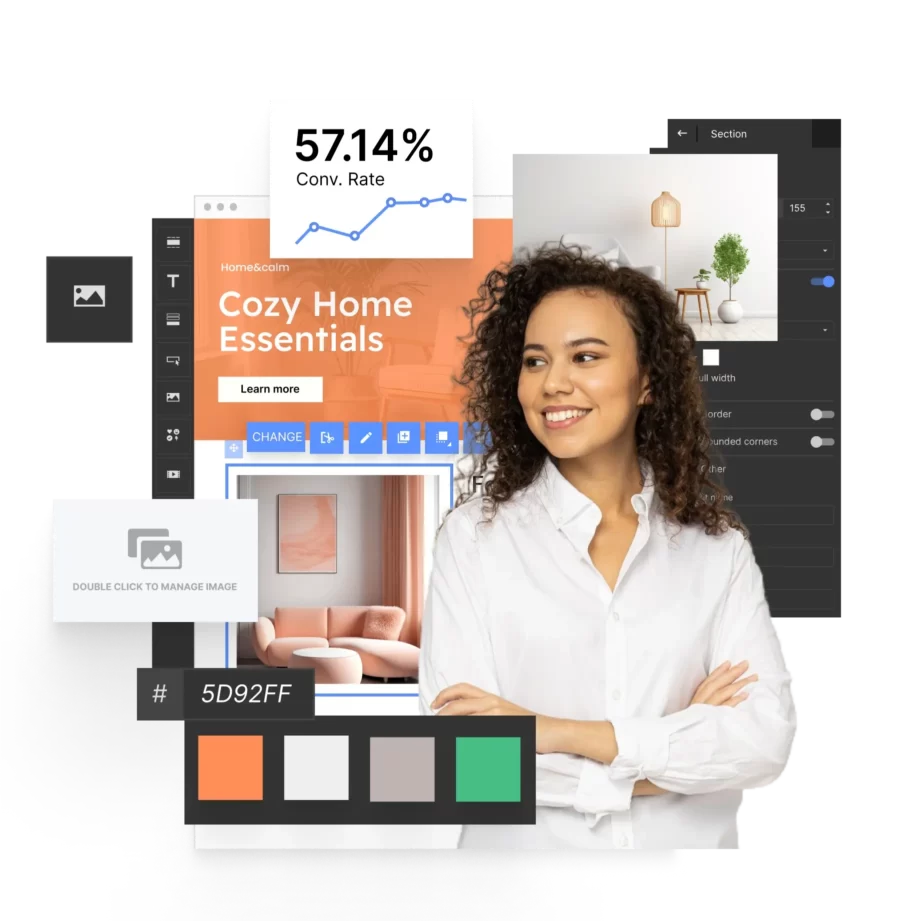
What is Digital Marketing?
Digital marketing is the strategic use of online channels to promote and sell products or services, primarily aiming to reach the right audience where they spend their time – on the internet. It encompasses a variety of tactics, including search engine optimization (SEO), pay-per-click advertising (PPC), social media marketing, email marketing, display ads, content marketing, and more.
The core objective of online marketing is to create measurable outcomes by driving traffic, generating leads, and converting those leads into customers. One of its main strengths is the ability to analyze data in real-time, allowing marketers to make informed decisions and optimize campaigns based on performance metrics. Additionally, the reach of digital marketing is vast – whether through global search engines like Google or social media platforms like Instagram and Facebook, businesses can connect with potential customers anywhere in the world.
Digital marketing is versatile and offers a broad array of tools to attract customers, but its effectiveness depends on having clear goals, well-defined audiences, and the ability to adapt to a constantly shifting digital landscape. It’s a fast-paced field, where trends like influencer marketing, AI-driven personalization, and algorithm changes can dramatically affect strategies and outcomes.
What is Inbound Marketing?
Inbound marketing focuses on drawing in potential customers by creating high-quality content and tailored experiences that address their needs and problems. Unlike outbound strategies like cold calling or paid ads, inbound marketing positions the brand as a helpful, trusted resource that people come to organically.
It’s rooted in the idea that customers today are empowered – they do their own research, compare options, and make decisions based on their needs and the solutions offered. By offering content that answers common questions or provides value, businesses can attract customers who are already looking for what they offer, leading to a smoother and more organic sales process.
Effective inbound marketing strategy uses tactics like content creation, SEO, social media engagement, email marketing, and marketing automation. The inbound methodology follows a simple principle: attract, engage, and delight. You first attract potential customers with valuable content, engage them through personalized communications, and ultimately delight them by solving their problems, turning them into loyal customers and even brand advocates.
Inbound marketing’s long-term focus fosters deeper customer relationships, contributing to higher customer retention rates and brand loyalty. It’s not about chasing leads aggressively, but about nurturing them with relevant, educational content that naturally leads them toward making a purchase when they are ready.
6 Key Differences Between Digital Marketing and Inbound Marketing
Key differences between digital marketing and inbound marketing include their scope, customer interaction, content strategy, timelines, cost structure, and target audience approach. While digital marketing casts a wide net using paid ads and broad outreach for quick wins, inbound marketing focuses on drawing in specific, engaged audiences through value-driven content and long-term relationship building. Read on to explore the six main differences in detail.
1. Scope and Approach
The scope and approach of digital marketing are generally broad and direct. It aims to cast a wide net, using channels like paid ads, email blasts, and social media posts to get in front of as many people as possible. It’s a more transactional approach that focuses on achieving immediate results.
Inbound marketing, on the other hand, has a more focused scope. Its approach is customer-centric, drawing in specific target audiences through organic means such as SEO-optimized content, personalized emails, and social media engagement. Inbound marketing doesn’t try to appeal to everyone at once. Instead, it nurtures relationships over time, appealing to individuals who have already shown an interest in your brand.
| Digital marketing in terms of scope and apporach | Inbound marketing in terms of scope and approach |
|---|---|
| Works like a large umbrella covering all online tactics | More focused on creating value first |
| Includes paid Google ads, Facebook advertising, banner ads | Uses content marketing through blogs, podcasts, videos |
| Uses email blasts to large lists | Focuses on organic SEO strategies |
| Implements social media promotional posts | Creates downloadable resources like ebooks and whitepapers |
| May include cold outreach through digital channels | Develops helpful tools and resources for audience |
2. Customer Interaction
Customer interaction in digital marketing is often one-way. Ads are displayed, emails are sent, and the primary goal is to capture attention quickly to drive a click or conversion. The relationship with the customer is typically short-term and transactional.
In contrast, inbound marketing emphasizes two-way communication. It encourages a dialogue with the customer through comments, social media conversations, and email follow-ups. The focus is on building trust, offering value, and engaging customers in a more personal and meaningful way. This interaction builds loyalty over time, with an emphasis on creating lasting relationships rather than one-off conversions.
| Digital marketing in terms of customer interaction | Inbound marketing in terms of customer interaction |
|---|---|
| Often uses automated responses | Emphasizes personalized communication |
| May focus on mass messaging | Uses targeted content for specific buyer personas |
| Interaction can be transactional | Focuses on building community |
| Metrics focus on clicks, views, and impressions | Encourages comments, discussions, and feedback |
| Communication can be one-directional | Creates interactive experiences |
3. Content Strategy
The content strategy in digital marketing is usually promotional and designed to capture immediate attention. Ads, promotional emails, and landing pages are crafted to push a specific product or offer. This type of content tends to have a short shelf life and is often created for quick wins.
Inbound marketing focuses on creating long-form, evergreen content designed to educate, inform, or entertain the audience. This includes blog posts, videos, podcasts, and eBooks that provide ongoing value. The goal is to address customer pain points and offer solutions, positioning your brand as a trusted resource. Inbound content also plays a significant role in SEO, helping to attract visitors organically over time.
| Digital marketing in terms of content strategy | Inbound marketing in terms of content strategy |
|---|---|
| Often promotional in nature | Educational and informative content |
| Heavy focus on product features | Focus on solving customer problems |
| Direct sale messaging | Long-form, detailed content |
| Short-form content for quick consumption | Industry thought leadership |
| Emphasis on brand messaging | Customer success stories and case studies |
4. Timeline and Results
The timeline and results in digital marketing tactics are generally short-term. You can see results almost immediately when running paid ads or email campaigns. However, once the campaign ends, the results typically stop as well. It’s a cycle of constant investment and quick returns.
Inbound marketing requires a longer time horizon. Results build slowly as content gains traction, leads are nurtured, and relationships develop. While it takes longer to see the payoff, the results are more sustainable. Leads generated from inbound efforts tend to be more qualified and more likely to convert, creating long-term value for your business.
| Digital marketing in terms of time and results | Inbound marketing in terms of time and results |
|---|---|
| Can see results within days or weeks | Takes 6-12 months to see significant results |
| Good for quick promotions | Builds compound growth over time |
| Results often tied to ongoing spending | Creates lasting assets (evergreen content) |
| Immediate traffic and leads possible | Develops authority and trust gradually |
| Results may drop when spending stops | Results continue even after initial investment |
5. Cost Structure
The cost structure of digital marketing is often higher upfront because it relies heavily on paid channels like PPC advertising, social media ads, and influencer marketing. You pay for immediate exposure, and the more you spend, the more visibility you get. However, once the budget runs out, so does the traffic and lead generation.
Inbound marketing generally has a lower initial cost because it relies on organic strategies like SEO, content marketing, and social media. While there may be costs involved in creating high-quality content and implementing automation tools, the long-term cost tends to be lower as inbound efforts continue to generate leads long after the initial investment.
| Digital marketing in terms of cost structure | Inbound marketing in terms of cost structure |
|---|---|
| Ongoing ad spend required | Higher upfront investment in content |
| Cost per click/impression model | Lower long-term operational costs |
| Regular budget needed for visibility | Focus on organic growth |
| Costs typically increase over time | Content assets appreciate over time |
| ROI directly tied to spending | Better long-term ROI potential |
6. Target Audience Approach
In digital marketing, the target audience approach is often broad and sometimes less specific. Campaigns may target large segments of people based on demographics or general interests, casting a wider net to reach more potential customers.
Inbound marketing strategy takes a more segmented and personalized approach. It focuses on attracting highly targeted audiences who are actively seeking solutions to their problems. By offering tailored content and resources, inbound marketing aims to appeal to niche audiences who are more likely to engage and convert.
| Digital marketing in terms of target audience approach | Inbound marketing in terms of target audience approach |
|---|---|
| Casts a wide net | Attracts qualified leads |
| Focuses on demographic targeting | Focuses on solving specific problems |
| Uses interest-based targeting | Targets based on buyer journey stage |
| Relies on platform algorithms | Builds audience through value delivery |
| Immediate audience reach | Creates deeper audience connections |
Digital Marketing vs Inbound Marketing Examples
While both digital and inbound marketing use online platforms, their practical applications in real-world campaigns differ significantly. Digital marketing can be very direct, using paid ads to generate quick traffic and immediate sales, while inbound marketing tends to be more strategic, focusing on long-term relationship-building and nurturing leads over time.
Digital Marketing Example
Let’s say you’re launching a new e-commerce website for a clothing brand. A digital marketing campaign might begin with PPC ads on Google and social media platforms like Instagram or Facebook. You create visually appealing ads showcasing your latest collection, targeting users based on their demographics and shopping behaviors. You may also run an email marketing campaign offering special discounts to encourage purchases, and even work with influencers to drive immediate traffic to your site.
Once a user clicks on an ad, they land on a well-optimized landing page with clear calls-to-action (CTAs) to make a purchase. If they don’t convert immediately, you might employ retargeting ads that follow them around the web, reminding them of your brand until they return to your site and complete the purchase.
This approach works well for short-term goals like launching a new product or running a flash sale, as the investment in ads brings rapid results. However, the moment the ad spend stops, traffic and sales generally decline, which means continuous investment is necessary to maintain momentum.
Take a look at an example timeline of a digital marketing tactics for an ecommerce clothing website launch:
- Pre-Launch
- Develop ads and segment audience.
- Prepare email content and engage influencers.
- Launch Phase (Week 1)
- Days 1-3: Launch PPC ads.
- Day 4: Start email campaign.
- Days 5-7: Influencer promotion.
- Post-Launch (Week 2+)
- Adjust ad targeting and implement retargeting ads.
- Analyze and reallocate the marketing budget.
- Ongoing Activities
- Continue ad investments for traffic.
- Update the landing page and plan for long-term engagement.
Inbound Marketing Example
Now, let’s take the same clothing brand but apply an inbound marketing approach. Instead of focusing on immediate conversions, you start by building a blog filled with articles that appeal to your target audience, such as “How to Style Summer Outfits” or “Eco-Friendly Fashion Trends in 2024.” These posts are optimized for SEO so that they rank well in search engines and drive organic traffic to your site.
To complement your content, you create a lead magnet, such as a downloadable “Seasonal Wardrobe Checklist” that users can access in exchange for their email addresses. Once you’ve collected those leads, you nurture them with a series of personalized emails, sharing more helpful content, offering styling tips, and occasionally promoting your products in a way that feels organic rather than pushy.
On social media, you focus on engaging with your audience through comments, polls, and user-generated content. Instead of simply promoting sales, you provide valuable fashion advice and build a community around your brand.
Over time, these efforts pay off. You build a steady flow of traffic to your website through search engines, social media, and email marketing. The customers you’ve nurtured are more likely to make repeat purchases, and they may even recommend your brand to others, amplifying your reach without additional ad spend.
Take a look at an example timeline of an inbound marketing tactics for a clothing brand:
- Months 1-2: Setup and Content Creation
- Research target audience interests and pain points.
- Develop a content strategy and start building a blog with SEO-optimized articles on trends and styling tips.
- Create a “Seasonal Wardrobe Checklist” lead magnet.
- Months 3-4: Lead Generation and Engagement
- Launch the lead magnet and collect email addresses.
- Begin sending personalized emails with content and occasional product promotions.
- Increase social media engagement through comments, polls, and user-generated content.
- Months 5-6: Optimization and Community Building**
- Analyze performance metrics to refine content and social media strategies.
- Introduce interactive social media content like live Q&A sessions.
- Start a referral program to boost word-of-mouth recommendations.
- Months 7-9: Scaling and Refinement
- Scale up successful content types and channels based on insights.
- Enhance email marketing with advanced personalization and segmentation.
- Continuously monitor and optimize all marketing activities for ongoing improvement.
Conclusions
When discussing inbound marketing vs digital marketing, it’s important to understand that both strategies serve unique purposes in the business landscape. Digital marketing shines in its ability to generate quick, measurable results and to reach broad audiences through paid advertising. In contrast, inbound marketing focuses on building long-term relationships with targeted audiences by providing valuable and relevant content and personalized interactions. Though each strategy has its distinct advantages, integrating both approaches often leads to optimal outcomes.
One key component that plays a pivotal role in both digital and inbound marketing is landing pages. They act as the main stage for everything from lead capture to product promotions. They’re the secret sauce to funneling online traffic from ads, social media, and emails into real action. And when it comes to creating those pages, Landingi is your go-to. It’s packed with advanced features like Smart Sections for quick builds, over 180+ integrations to keep everything connected, and loads of customization options so your pages pop and match your brand vibe perfectly. With Landingi, you’re all set to rock both digital and inbound marketing campaigns, ensuring your pages look great and work smoothly, no matter where your audience is coming from.
Try Landingi to optimize your marketing efforts and create high-converting landing pages that support both immediate, ad-driven conversions and long-term inbound marketing goals!

